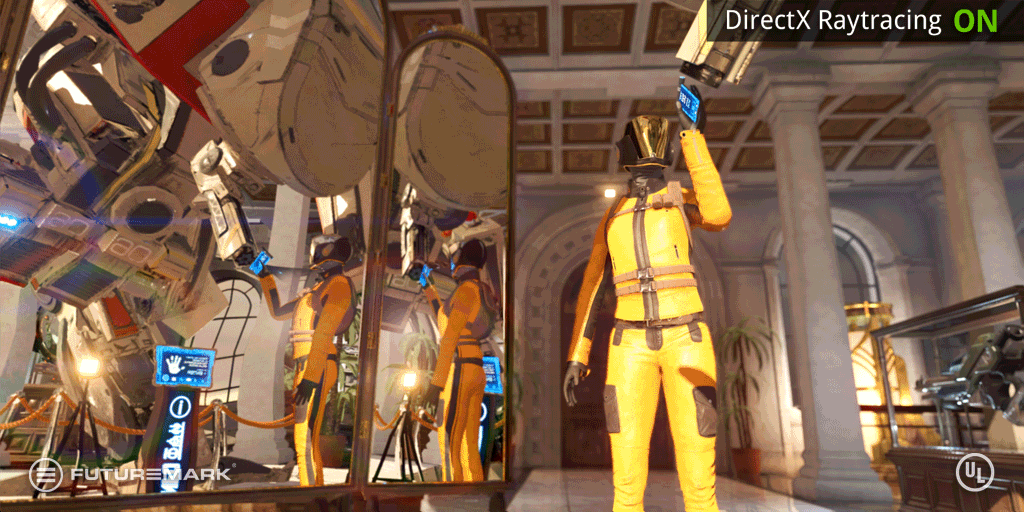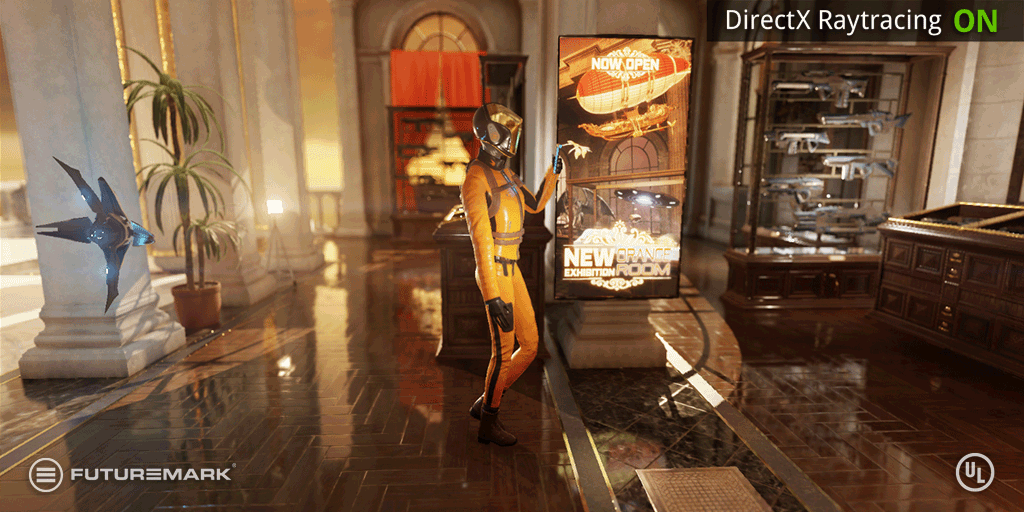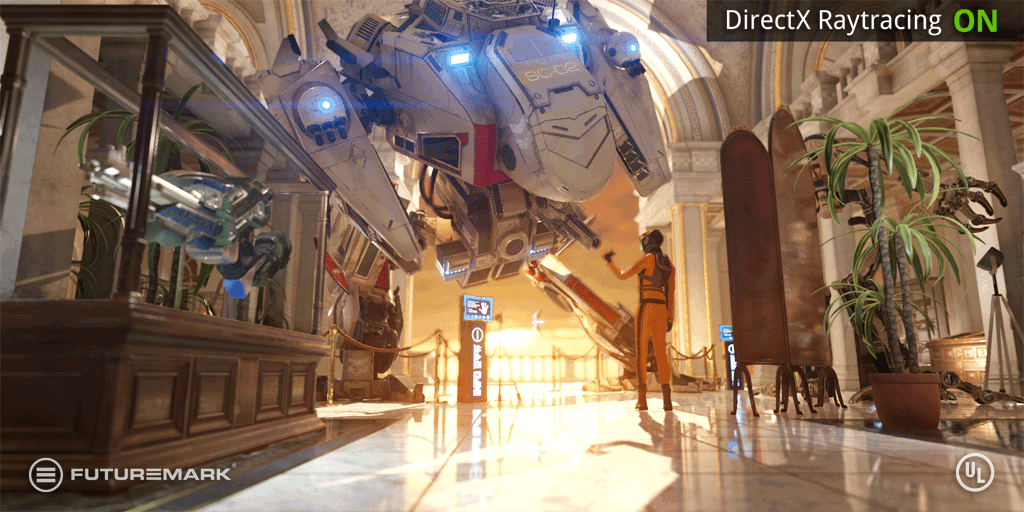Futuremark has shared with us some GIFs, showing some of the visual improvements that are coming with real-time raytracing. According to the team, real-time raytracing can render accurate real-time reflections of dynamic objects, can produce reflections of objects that exist outside the main camera view, can produce accurate, perspective-correct reflections on all surfaces in real-time, and they can make other surfaces (than mirrors) look more realistic too.
What’s really cool here, however, is that Futuremark plans to release the first real-time raytracing benchmark test at the end of 2018. Do note that this benchmark test will not be similar to the GDC tech demo that Futuremark showcased. Futuremark will not use the same scene that was present in the GDC tech demo.
As Futuremark told us, its DXR tech demo runs in real-time on current GPU hardware and, because it builds on existing methods, it was relatively easy to implement into its DirectX 12 game engine.
As noted, developers can right now – with DXR – use rasterization for most of the rendering and a smaller amount of raytracing to enhance shadows, reflections, and other effects that are difficult to achieve with traditional techniques.
It will be interesting to see whether developers will use DXR in their engines in order to allow PC gamers to enjoy better visuals in their games. Yes, full ray tracing rendering is still ways off, however, these limited techniques introduced by Futuremark could be very well used in a variety of games, especially since Futuremark claims that they were relatively easy to implement.

John is the founder and Editor in Chief at DSOGaming. He is a PC gaming fan and highly supports the modding and indie communities. Before creating DSOGaming, John worked on numerous gaming websites. While he is a die-hard PC gamer, his gaming roots can be found on consoles. John loved – and still does – the 16-bit consoles, and considers SNES to be one of the best consoles. Still, the PC platform won him over consoles. That was mainly due to 3DFX and its iconic dedicated 3D accelerator graphics card, Voodoo 2. John has also written a higher degree thesis on the “The Evolution of PC graphics cards.”
Contact: Email




